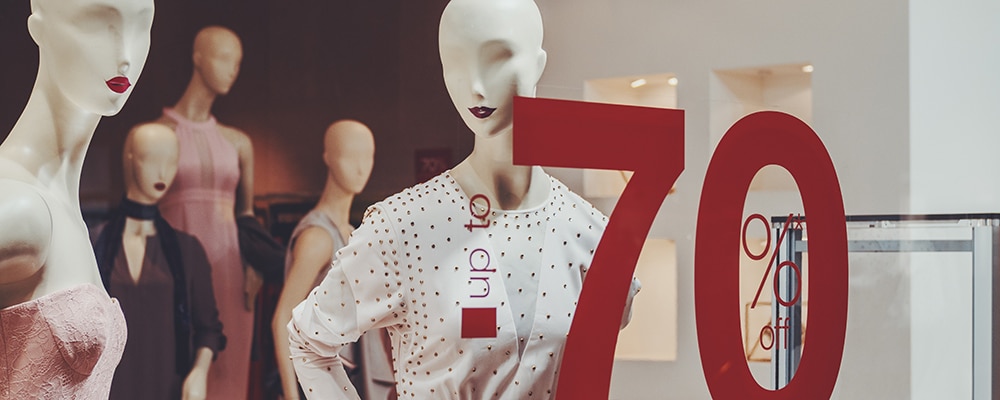Extensive planning and alignment with wider business activities lays a strong foundation for promotions that excite customers, benefit business and minimise unnecessary pressure on store and visual merchandising staff.
The effective management of promotional activities can be challenging but is less so with open and clear communication between all relevant parties.When it comes to installation its all hands on deck and staff benefit from knowing exactly what is required of them when, and how it is to be done. With the right planning, it should be straightforward.
As retailers become increasingly customer centric in their business decision-making it is to be expected that a high level of customer centricity be applied to display design. After all, promotional displays are intended to attract and appeal to customers and stand out amidst the throng of competitors. Being customer centric requires a thorough understanding of the target audience.
To learn how to manage merchandise, the ARA Retail Institute runs multiple workshops on assessing merchandise . Join the ARA Retail Institute in their latest workshop which looks into how to assess merchandise quality, sourcing and compliance.
{{cta(’44b8f567-eeae-4325-9b23-a1d52c2351b4′)}}
It matters not so much what would appeal to everyone as what will appeal to the people that buy or might be likely to buy the products and services you offer. A retailer’s ability to maximise customer impact through display is all about how well they create a multi-sensory experience that resonates with their target market.
Focusing upon windows, hotspots, impulse areas and point of sale counters is essential as these are both the highest traffic areas. Being the areas where customers are most likely to be open to engaging with product they also generate the highest sales. Planning promotional activity in a logical progression throughout the store both increases product exposure to the customer and reinforces the offer to maximise impact. A repeated message has greater likelihood of being received. For example products featured in window displays should be replicated in-store in such a way that customers find it relatively simple to find the product should they wish to feel, try and buy. Display in a hotspot within sight of the entry is one way this can be done.
The promotion of impulse buys is an integral way in which retailers can encourage additional sales. By definition, impulse buys are those that require little decision making on the part of customers. They may be value or highly desirable lines, accessory items to the initial product i.e. batteries, novelty products particularly those aimed at small children, and basic or necessary items. Many impulse buys are seasonal so require effective planning to maximise sales opportunities.
The successful promotion of impulse products requires location in areas of high traffic flow such as point of sale counters; dump bins and gondola ends, areas where customers queue are particularly effective. Products need to be available in volume and easily accessed and promoted with ticketing that features the value. Often multiple item discounts are employed to great effect and product rotation can increase sell through. The key is to plan displays with the customer at the heart of the process. What would be appealing, what is known of their buying behaviours, are they motivated by price, fashion or convenience?
It should now be apparent that retailers have many strategies at their disposal with which to appeal to their customers. The use of signage and ticketing is yet another. The ways in which retailers use signage and ticketing is just as diverse as the ways they merchandise their stores. Many luxury retailers use minimal signage and ticketing, with prices being hidden inside products. At the other extreme, retailers that operate in highly competitive markets where price is the main element of differentiation do their best to use signage and ticketing to feature price.
Others still use signage extensively to describe the features of products in an effort to attract customers. The objective of using signage and ticketing is to communicate to customers information about the featured product that may not be assumed. This is an important distinction as it defines how signage and ticketing should and should not be used.
When used effectively signage and ticketing can improve customer self-selection as a clearly communicated value offer may be all that is required to motivate a buying decision. As with all visual merchandising actions signage and ticketing needs to be planned and implemented as part of the whole vision to ensure consistency of store image and commerciality.
About ARA Retail Institute
ARA Retail Institute is Australia’s leading retail training provider for both accredited and non-accredited learning programs. For more information, please visit: www.retailinstitute.org.au





















